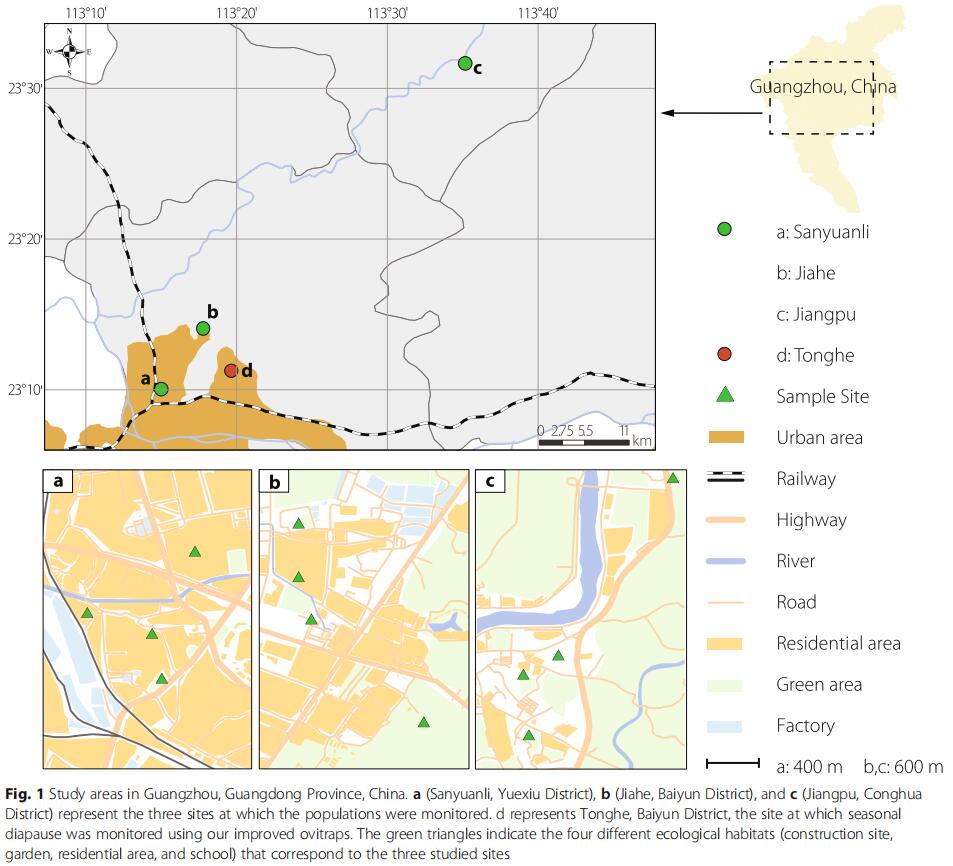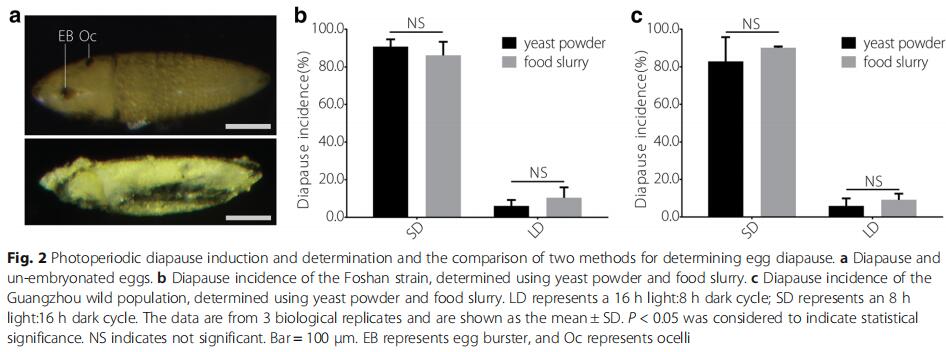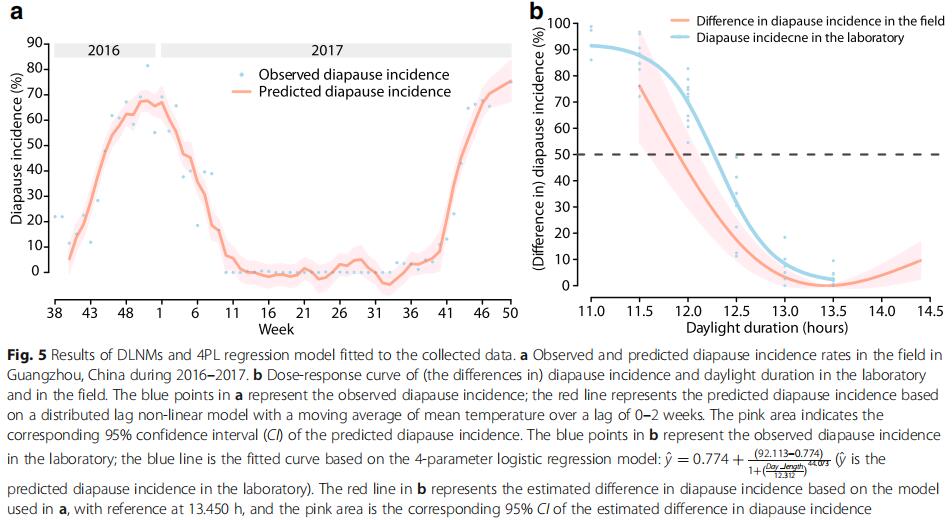Dan Xia, Xiang Guo, Tian Hu, Li Li, Ping-Ying Teng, Qing-Qing Yin, Lei Luo, Tian Xie, Yue-Hong Wei, Qian Yang, Shu-Kai Li, Yu-Ji Wang, Yu Xie, Yi-Ji Li, Chun-Mei Wang, Zhi-Cong Yang, Xiao-Guang Chen*, Xiao-Hong Zhou*
ABSTRACT
Background: Aedes albopictus is among the 100 most invasive species worldwide and poses a major risk to public health. Photoperiodic diapause provides a crucial ecological basis for the adaptation of this species to adverse environments. Ae. albopictus is the vital vector transmitting dengue virus in Guangzhou, but its diapause activities herein remain obscure.
Methods: In the laboratory, yeast powder and food slurry were compared for a proper diapause determination method, and the critical photoperiod (CPP) was tested at illumination times of 11, 11.5, 12, 12.5, 13, and 13.5 h. A 4-parameter logistic (4PL) regression model was selected to estimate the CPP. In the field, the seasonal dynamics of the Ae. albopictus population, egg diapause, and hatching of overwintering eggs were investigated monthly, weekly, and daily, respectively. A distributed lag non-linear model (DLNM) was used to assess the associations of diapause with meteorological factors.
Results: In the laboratory, both the wild population and the Foshan strain of Ae. albopictus were induced to diapause at an incidence greater than 80%, and no significant difference (P > 0.1) was observed between the two methods for identifying diapause. The CPP of this population was estimated to be 12.312 h of light. In the field, all of the indexes of the wild population were at the lowest levels from December to February, and the Route Index was the first to increase in March. Diapause incidence displayed pronounced seasonal dynamics. It was estimated that the day lengths of 12.111 h at week2016, 43 and 12.373 h at week2017, 41 contributed to diapause in 50% of the eggs. Day length was estimated to be the main meteorological factor related to diapause.
Conclusions: Photoperiodic diapause of Ae. albopictus in Guangzhou of China was confirmed and comprehensively elucidated in both the laboratory and the field. Diapause eggs are the main form for overwintering and begin to hatch in large quantities in March in Guangzhou. Furthermore, this study also established an optimized investigation system and statistical models for the study of Ae. albopictus diapause. These findings will contribute to the prevention and control of Ae. albopictus and mosquito-borne diseases.
Parasites & Vectors. 2018; 11: 4.
DOI : https://doi.org/10.1186/s13071-017-2581-y


